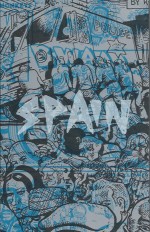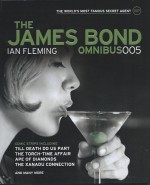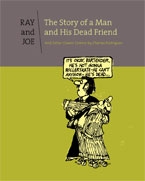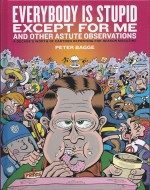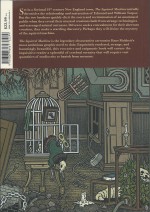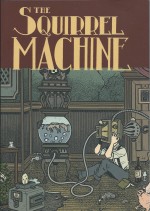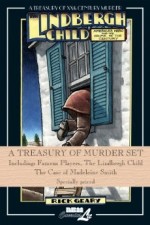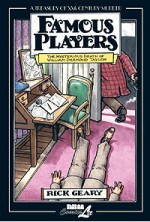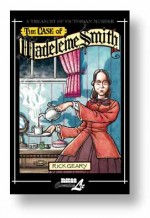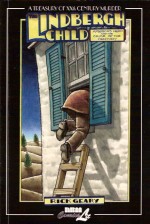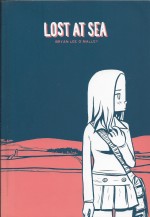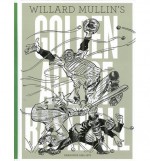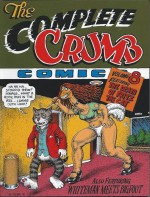
By R. Crumb & guests (Fantagraphics Books)
ISBN: 978-0-56097-076-7
This book contains really clever and outrageously dirty pictures, rude words, non-condemnatory drug references and allusions, apparent racism, definite sexism, godless questioning of authority and brilliantly illustrated, highly moving personal accounts and opinions. It also painfully displays a genius grappling with his inner demons in a most excruciatingly honest and uncomfortable manner.
If you – or those legally responsible for you – have a problem with that, please skip this review and don’t buy the book.
Really.
I mean it…
Robert Crumb is a truly unique creative force in comics and cartooning, with as many detractors as devotees. From the first moments of the rise of America’s counterculture, his uncompromising, forensically neurotic introspections, pictorial rants and invectives unceasingly picked away at societal scabs, measuring his own feelings and motives whilst ferociously ripping way civilisation’s concealing curtains for his own benefit. However, he always happily shared his unwholesome discoveries with anybody who would take the time to look…
In 1987 Fantagraphics Books began the Herculean task of collating, collecting and publishing the chronological totality of the artist’s vast output, and those critically important volumes are being currently reissued for another, more liberated generation.
The son of a career soldier, Robert Dennis Crumb was born in Philadelphia in 1943 into a dysfunctional, broken family. He was one of five kids who all found different ways to escape their parents’ highly volatile problems, and comic strips were paramount among them.
Like his older brother Charles, Robert immersed himself in the comics and cartoons of the day; not just reading but creating his own. Harvey Kurtzman, Carl Barks and John Stanley were particularly influential, but also comic strip legends such as E.C. Segar, Gene Ahern, Rube Goldberg, Bud (Mutt and Jeff) Fisher, Billy (Barney Google) De Beck, George (Sad Sack) Baker and Sidney (The Gumps) Smith, as well as classical illustrators like C.E. Brock and the wildly imaginative and surreal 1930’s Looney Tunes and Merrie Melodies animated shorts.
Defensive, introspective, frustrated, increasingly horny and always compulsively driven, young Robert pursued art and self-control through religion with equal desperation. His early spiritual repression and flagrant, hubristic celibacy warred with his body’s growing needs. …
To escape his stormy early life, he married young and began working in-house at the American Greeting Cards Company. He discovered like minds in the growing counterculture movement and discovered LSD. By 1967 Crumb had moved to California and became an early star of Underground Commix. As such he found plenty of willing hippie chicks to assuage his fevered mind and hormonal body whilst reinventing the very nature of cartooning with such creations as Mr. Natural, Fritz the Cat, Devil Girl and a host of others. He worked on in what was essentially a creative utopia throughout the early 1970’s but the alternative lifestyle of the Underground was already dying. Soon it would disappear: dissipated, disillusioned, dropped back “in†or demised.
A few dedicated publishers and artists stayed the course, evolving on a far more businesslike footing as Crumb carried on creating, splitting his time between personal material and commercial art projects whilst incessantly probing deeper into his turbulent inner world.
This eighth volume mostly covers – in chronological order – material created and published in 1971 (with the merest tantalising smidgen of stuff from 1972), when the perpetually self-tormented artist first began to experience creative dissatisfaction with his newfound status as alternative cultural icon: a period when the no-longer insular or isolated artist was at his most flamboyantly creative, generating a constant stream of new characters, gags, commercial art jobs, short strips and with longer material popping up seemingly everywhere.
It was also the moment when he began to realise the parasitic, exploitative nature of many of the hangers-on exploiting his work for profits which he never saw himself – particularly filmmaker Ralph Bakshi, whose phenomenally successful movie of Fritz the Cat prompted Crumb to kill the cunning kitty character off…
That and more are all faithfully reproduced in this compilation – which makes for another rather dry listing here, I’m afraid – but (as always) the pictorial material itself is both engrossing and astoundingly rewarding. But please don’t take my word for it: buy the book and see for yourselves…
After a passionate if meandering photo-packed Introduction from wife and collaborator Aline Kominsky-Crumb – whom he first met in 1971 – the stream of cartoon consciousness and literary freewheeling begins with the salutary tale of ‘Stinko the Clown in Stinko’s New Car’ from Hytone, rapidly followed by the strange romance of ‘Maryjane’ originally seen in Home Grown Funnies, which also provided the (now) racially controversial and unpalatable ‘Angelfood McDevilsfood in Backwater Blues’ – with that horrific homunculus The Snoid – and twisted “love†story of ‘Whiteman Meets Big Foot’…
The underground Commix scene was awash with artistic collaborations and a selection of jam sessions kicks off here with ‘Let’s Be Realistic’ from Hungry Chuck Biscuits wherein Crumb, Jay Lynch, Jay Kinney & Bruce Walthers surreally free-associated, whilst in Mom’s Homemade Comics Denis Kitchen, Don Glassford, Dale Kuipers, Jim Mitchell, Pete Poplaski, Wendel Pugh, Jay Lynch, Dave Dozier, Bruce Walthers & Dennis Brul joined forces with the bespectacled outsider to make some ‘Kumquat Jam’…
From ProJunior, ‘Perdido Part One’ and ‘ProJunior in Perdido Part Two’ saw the Dagwood-esque everyman experience the growth in social violence courtesy of Crumb and fellow legend S. Clay Wilson.
All on his own again Crumb captured the appalling nature of ‘Jumpin’ Jack Flash!’ (from Thrilling Murder) and crafted a lovely ‘Nostalgic Books catalog cover’ for their Summer/Fall 1971 issue, after which a tranche of material from Big Ass #2 (August 1971) starts with a paranoiac perusal of ‘The Truth!’, before another obnoxious jerk resurfaces to dominate sexy bird creatures in ‘Eggs Ackley in Eggs Escapes’ even as the intimately contemplative domestic explorations of ‘A Gurl’ dissolve into the raucous, earthy humour of ‘Anal Antics’ to end the first black and white section of this challenging chronicle.
A vividly vivacious Color Section celebrates a wealth of covers, opening with ‘The Last Supplement to the Whole Earth Catalog’(March 1971), followed by ‘Home Grown Funnies’ and its angsty back cover strip ‘The Desperate Character Writhes Again!’. Moving on, ‘Big Ass #2’, ‘Mr. Natural #2’ – front and back covers – leads to ‘Bijou Funnies #6′ and the rainbows end on the sublimely subversive front for ‘The People’s Comics’.
A return to monochrome provides two more strips from Big Ass #2 beginning with the savagely ironic ‘A Word to you Feminist Women’ and the cruelly hilarious ‘Sally Blubberbutt’ after which the contents of Mr. Natural #2 (October 1971) unfold with ‘Mr. Natural “Does the Dishes‒, before ruminating and sharing more timeless wisdom with resident curious “Straight†Flakey Foont in ‘A Gurl in Hotpants’.
This leads to ‘Sittin’ Around the Kitchen Table’ and meeting ‘The Girlfriend’, after which two untitled Mr. Natural graphic perambulations result in a cult war with the adherents of the aforementioned Snoid and everything ends with the sage and his buddy The Big Baby being released from jail to go ‘On the Bum Again’…
From Bijou Funnies #6 comes another taste of ‘ProJunior’ as the poor shmuck seeks employment to keep his girlfriend quiet, whilst the jam feature ‘Hef’s Pad’ (by Crumb, Lynch & Skip Williamson) exposes the darker side of selling out for cash and fame…
A strip from Surfer Magazine vol. 12, #6 trenchantly heralds the advent of work from 1972 when ‘Salty Dog Sam “Goes Surfin’!‒, whilst the cover of Zap 7 (Spring issue) and the Nostalgia Press Book Service Catalog cover neatly segues into three superb landmark strips from The People’s Comics beginning with a deeply disturbing glimpse inside the befuddled head of the “Great Man†in ‘The Confessions of R. Crumb’.
That poignantly outrageous graphic outburst leads to a cruelly sardonic polemic in ‘The R. Crumb $uck$e$$ Story’ which merely serves as a sound narrative investment for the shockingly self-satisfied, liberating cartoon catharsis achieved by killing off his now-unwelcome signature character in ‘Fritz the Cat “Superstar‒…
If Crumb had been able to suppress his creative questing, he could easily have settled for a lucrative career in any one of a number of graphic disciplines from illustrator to animator to jobbing comic book hack, but as this pivotal collection readily proves, the artist was haunted by the dream of something else – he just didn’t yet know what that was…
Crumb’s subtle mastery of his art-form and obsessive need to reveal his every hidden depth and perceived defect – in himself and the world around him – has always resulted in an unquenchable fire of challenging comedy and untamed self-analysis, and this terrific tome shows him at last mastering – or at least usefully channelling – that creative energy for the benefit of us all.
This superb series charting the perplexing pen-and-ink pilgrim’s progress is the perfect vehicle to introduce any (over 18) newcomers to the world of grown up comics. And if you need a way in yourself, seek out this book and the other sixteen as soon as conceivably possible…
Let’s Be Realistic © 1971, 1992, 1997, 2013 Crumb, Jay Lynch, Jay Kinney, Bruce Walthers & R. Crumb. Kumquat Jam © 1971, 1992, 1997, 2013 Denis Kitchen, Don Glassford, Dale Kuipers, Jim Mitchell, Pete Poplaski, Wendel Pugh, Jay Lynch, Dave Dozier, Bruce Walthers, Dennis Brul & R. Crumb. All other material © 1971, 1972, 1992, 1997, 2013 Robert Crumb. All contributory art material and content © the respective creators/copyright holders. All rights reserved.
